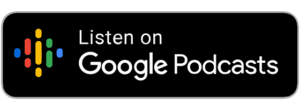Leading Purpose at Work | 091
The last few episodes, we’ve talked about the purpose gap and the organizational purpose pitfalls. So what’s the answer? How can you make a difference? Stay tuned.
Welcome to Lean Leadership for Ops Managers, the podcast for leaders in Ops Management who want to spark improvement, foster engagement, and boost problem solving – AND still get their day job done. Here’s your host, Leadership Trainer, Lean Enthusiast, and Spy Thriller Junkie, Jamie V. Parker.
[00:00:41] Leading purpose at work. That’s what we’re talking about today. Now, remember that in my leading excellence model, there are four quadrants that bridge the gap between what people want from work and what leaders want. Their organizations and these for are purpose, participation, performance and progression. So we’ll put links in our show notes to those past episodes, talking about why these four quadrants matter and the purpose quadrant in particular.
Now our current mini-series, this these topic we’ve been talking about is planted firmly in the purpose quadrant. And remember, when I talk about purpose within the context of leading excellence, I’m talking about more than the organizational purpose statement. You know, the thing you see on a poster. I’m really talking about this idea of True North.
So think of True North as the ideal state of being for an organization. It’s the compass by which decisions can be made and by which we can come together and collaborate. So in my mind, True North includes the aspirational who we are, who we aspire to be in our core values, why we do what we do, how we do it- meaning those key principles that we believe in, how we behave and what we do that creates value. What is creating value? What are we trying to achieve?
Now the purpose gap is this thing that was identified in a recent McKinsey study that showed that 85% of senior leaders believe that they can live their purpose at work. Meanwhile, only 15% of team members, frontline leaders or mid-level managers say the same.
[00:02:17] And I have to tell you, I am horrified by this inequity. I believe that leaders at all levels have the ability to directly change this and to eliminate this purpose gap. We need to get rid of it. And you can do that. You can be a part of making that happen. But what I see, though, is when organizations tackle purpose, sometimes they fall into pitfalls.
And in the last episode, I shared some of the pitfalls I’ve seen. And those pitfalls leave people feeling confused, disconnected, or maybe even skeptical as like, Yeah, what you’re saying. That’s not what really happens. That’s not the way we actually do it. You’ve all seen it, right? You’ve seen the mission statement posters on the wall that everyone walks by but doesn’t capture the actual culture at all. Yeah.
Right now I am working with one of my clients on Leading Purpose at work, and I’m going to share with you today some insights into what we’re doing to help them overcome the purpose gap and the purpose pitfalls and why we’re doing it that way. So remember in the McKinsey study, 70% of people said that their purpose is largely defined by their work, but only 18% said that they get as much purpose from work as they want. So the question is, what should you do? And I promised you I was going to give you actionable steps you can do.
[00:03:38] And I am giving that away to you right now.
So there are three primary steps that you can take to effectively lead purpose at work.
Step number one is to clarify true north.
Step number two is to connect the dots.
And step number three is to make it personal.
So it is hard to be what you can’t see. And I’m actually going to go on a quick tangent here. Bear with me. It’s hard to be what you can’t see, which is just one reason that representation matters. There are lots of other reasons. This is one of them, right? Why? It’s important to have people of color and women and other underrepresented folks on the board and in senior leadership positions besides the fact that it’s the right thing to do. And those people have amazing value to give that you’re missing out on today.
But in so many organizations, right, in so many organizations, including some of the clients that I work with, there may be diversity at the front line or at the supervisor level, but mid manager, senior manager, directors, C-suite, that all dissipates and what happens is it perpetuates itself.
You get more of what you have already, you get more of what people already see. So, yes, be purposeful, be intentional. Take extra steps to create inclusion in your organization. Because when you win, people can see representation at the board and at your executive and your senior levels. Then you are going to be able to create more of that and have more diversity, more equity and more inclusion and accessibility. All right.
So back to our programing. It’s hard to be what you can’t see. It’s hard to emulate what isn’t clear. It’s hard to feel connected to what you don’t understand. And this problem can show up in many ways. I had one client that had all the pieces of a clear true north, but they were all housed in different places. And so no one had the whole picture. Everyone just had pieces.
I had another client who had 37 pages of stuff related to their true north, and so it was sheer overwhelm. I had another client that was kind of smaller and up and coming organization, and the CEO said to me, I’m just not clear yet on what the game is and what the score scoreboard is. I can’t really articulate it to the team because I’m not clear on it myself.
So you need to start by clarifying True North in what ever way? Right. Wherever you’re coming from. Who do we aspire to be? Why do we do what we do? What do we do that creates value? And what are we trying to achieve and how do we go about doing it? What are our ways of working and our beliefs that we emulate in how we work? Start by answering those questions. I’ll put them in the show notes for you and I say, I will put them in the show notes for you.
[00:06:33] Start by answering those questions and then edit, edit. Narrow down. Get rid of the junk. Get rid of the stuff that. Maybe it’s not junk. Maybe it’s good and it’s important at school, but it’s really not critical. And you should be left with a one pager. And I don’t mean like a one page or six point type, right? But after you start pulling away, after you start editing the answers to those questions, then you’ll be left with a one pager and say, Oh, this, this is the true North, recognizing that you’re going to get feedback and it’s you’re going to go through an iterative process and it might change and adjust as you learn more.
But that’s how you’re going to get started here. Now, you might not be the executive leader in your organization, but you can still do this process. You gather up all the things that do exist. Remember my client with 37 pages? That’s what that’s what he was doing. He was going through this process. He was pulling what the company is already articulated. And then you see which parts of that answer those questions I just shared.
And through this you have a one pager and you are ready for step two within clarify. True north which is to clarify it for others. So now you’ve clarified clarified it for yourself, right? You’ve clarified it for your executive leadership team.
[00:07:47] Now you need to clarify it for others, which means to share it, to talk about it. Share the true north. Share what it means to you. Share why you think it’s important. And then ask and listen. Ask your team members what resonates with you. Where do you think we excel? Where does reality not match our true north aspirations? So that’s your step one. Clarify the true north.
Now that every single person on your team is clear about your true North, you are ready to take step to connect the dots. I have a client that does some pretty amazing work. They make life saving medicines. I mean, who can’t get behind that purpose? There are literally people alive today who would not be alive otherwise if they did not do what they do. But most people in their organization do not spend most of their time directly making the specific life saving medicine, like actually making the stuff right.
Think about your work. What did you do yesterday? Write it out on a list. What’s on it? You answered emails. You pulled and reviewed reports. You attended some meetings. You did some administrative paperwork. You had some one on ones with team members. You troubleshoot a few issues that came up. Maybe you have a new team member that you’re onboarding and so you gave a tour. What else did you do?
How much of those little tasks did you do yesterday that you felt a tremendous amount of purpose in that you’re like, Oh, this is purpose. I’m living my purpose at work right now. Most of the activities you do and that you did, you probably didn’t have that innate feeling.
Think about the work of your frontline team members. What did they do yesterday? Maybe a same or similar repetitive task over and over. And then they inspected quality and they filled out some paperwork and they input some data and maybe they did more repetitive work over and over. Even for my client, who makes life saving medicine, the actual work, people working in manufacturing, who are making this life saving medicine, the actual activity, the things that they do can feel mundane, just like the support work of writing code or validating code or processing invoices or writing marketing copy or reviewing resumes.
And that’s why you need to outwardly be very explicit in connecting the dots to team members daily work and to true north to the core values or to purpose or to principles or to the value, outcomes and drivers. Here’s an example. You ready?
Leah is a member of my team who produces this podcast, and some of the work she does is tedious. So, for example, she processes and edits the transcript and writes the show notes and makes the WordPress post so it shows up on the website. There’s all these little things she puts in the email and she loads the email, all of this stuff, and it’s the same repetitive activity every episode.
[00:10:47] And let me tell you, processing transcripts is tedious. It’s boring. It’s not an inspiring task. And most listeners will never look at it. Right. Most you think it might be you, right? Maybe. You have never looked at a transcript of this podcast.
But you know what? A task is important. When I started this practice, I had a group of friends in my basement brainstorming with me and we’d flip charts and all the things. And one of the values I wrote down on the flip chart of things that were important to me was accessibility. I believe that mid-level operations managers are some of the most important and influential people in our organizations when it comes to culture, performance and improvement. And yet I believe that they are often highly neglected. And so I didn’t want my work to be only accessible for executive leaders.
And that value of accessibility and impact transcends to this podcast. It’s part of why I do this podcast and to the transcripts. Leah processes transcripts of every episode so that this work is accessible to those with hearing loss. And also to those who just prefer to read versus listen confession. I’m one of those people I would so rather just read a transcript. So, listen, even though this work is tedious, right? This transcript work is tedious and it’s boring. It’s directly connected to our true north of who we aspire to be and how we operate.
[00:12:20] And for this podcast, one of my expectations is that we have a transcript for every episode, and that’s important. So that’s how you connect the dots. Step one Clarify True North. Step two, connect the dots every day. Help team members see how the work they do connects to True North.
And that brings us to step three. Make it personal. Part of leading purpose at work is to communicate true North frequently using different methods and approaches and lenses. Think back to the episode with Justin Woodard, where he talked about creating alignment by communicating through four different or with four different archetypes in mind. Leah will link that episode in the show notes for us too. So she’s going to do that work behind the scenes so you can find that episode too.
So listen, this step of making it personal is about taking that communication beyond the corporate words on the page. Beyond the direct work team members are doing and making it personal. Using stories. Stories are the core of connection. Ring true north to life for your team by telling stories and by asking others to share their stories.
I want you to tell your own stories, tell customer stories, tell team member stories. Ask for others to share their stories and create the avenues for those stories to be told. So I was talking with a group of leaders about connecting the dots, and I use the transcript example that I just shared with you about how Leah makes this transcript.
[00:13:55] And one of the leaders piped up and he said, Hey, you know what? I listen to your podcast, but when there’s something really juicy that I really want to make sure I can reference back to in the future or that I really want to take action to, I go and pull the transcript. What?
So he downloads the transcript. He highlights the key sections. And then, you know what? Depending on whatever he’s doing with it, it saves it. And this was his solution to a problem, because he said that he usually listens to the podcast when he’s on the road or working out. And then days later, or maybe even weeks or months later, something comes up. He’s like, Oh, yeah, Jamie talked about that. But then he’s got to figure out like, Where was it? Which episode did she talk about that in? And then he goes, and if he finds if he finds episode, it’s like, okay, now where was it in the episode?
But what he does instead is when he hears it, he downloads the transcript and then he files it in a way that his brain works so that now the material is there and that he can use it and he can easily find it. And that is all possible because Leah processes and uploads that transcript for every episode. See what I just did there. That’s a super simple, basic example.
[00:15:06] I also can talk about my own stories of transcript and of reading instead of listening or reading instead of watching. And I can share all kinds of other ways in communication to help bring this to life. So, yes, I shared in connecting the dots why the transcript is important, and I made it personal by giving a story.
So let’s recap the purpose gap. 85% of senior leaders say that they can live their purpose at work, but only 15% of the rest of us say we can. Organizational purpose pitfalls get in the way. Go back and listen to that last episode if you missed it. And the three action steps you can take are number one to clarify, true north. Number two, connect the dots. And number three, make it personal.
I’m working with one of my clients right now on this work. Doing this work. Exactly. And if you want help developing leaders across your organization who effectively lead purpose at work, then hit me up. You can actually just head to process results dot com and there’s a schedule a call button. All right.
I’m going to leave you with your one next step. Here it is. Your one next step. I want you to think about the three action steps we talked about. Clarify true north to connect the dots and to make it personal. And then ask and answer for yourself. Which one do you think you need to work on next? And why. All right. That’s it for today. Until next time.












